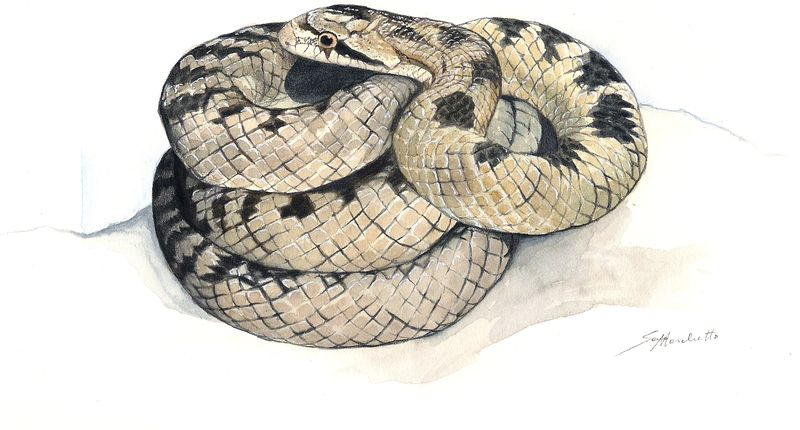It is a small snake species, with adults rarely exceeding 65 cm in length. The upper parts of the body are usually quite light with evident cinnamon-colored shades, with longitudinal rows of brown or black spots. The ventral regions are whitish or cream-colored, with irregularly arranged or aligned dark spots; this distinctive checkered pattern facilitates the recognition of the species. Another distinctive feature is the typical black band that starts from the mouth, reaches the eye, and goes up to the top of the head.
The Riccioli's snake lives in well-exposed environments, such as rocky areas, shrubs, cultivated fields, pastures, fallow land, vineyards, and olive groves. The species is not easy to observe since its activity is mainly crepuscular and nocturnal; during the day, it hides under rocks, in dry stone walls, in piles of wood, in cracks in rocks, or under shrubby vegetation. It is often found around ruins and houses.
The species has an irregular distribution but is mostly present below 400 m altitude.
The seasonal period in which it is inactive ranges from November to early April. In winter, interruptions in hibernation can occur if there are particularly favorable days from a thermal point of view.
Mating takes place between the end of April and June. The female lays up to 6 eggs, approximately 13-15 X 20-25 mm in size. Hatching occurs in August-early September, and the newborns are immediately independent.
Adults mainly feed on lizards and geckos; they can also prey on small mammals and other snakes. Juveniles feed on small lizards, earthworms, and arthropods.
It is a slow species and does not react to capture by biting. The Riccioli's snake is decreasing species in Italy. The most significant threats to this species are wildfires, the destruction of old dry stone walls, and road vehicle traffic. It is also often killed as it is mistaken for a viper.
The Riccioli's snake is listed in Appendix III of the Bern Convention and in Annexes A and B of the Tuscan Regional Law 56/2000.

